Pearl Zhu's Blog, page 1275
November 21, 2016
Decision-Making in the Uncertain Time
 The pace of change is accelerated both in businesses and the entire human society, either as individual or organization, uncertainty (of outcomes or occurrences) is inherent in almost every endeavor. In fact, we are reaching the digital era with “VUCA” characteristics - Velocity, Uncertainty, Complexity, and Ambiguity. How to deal with the new normal and improve decision-making in an uncertain time?
The pace of change is accelerated both in businesses and the entire human society, either as individual or organization, uncertainty (of outcomes or occurrences) is inherent in almost every endeavor. In fact, we are reaching the digital era with “VUCA” characteristics - Velocity, Uncertainty, Complexity, and Ambiguity. How to deal with the new normal and improve decision-making in an uncertain time?The impact of uncertainty can be, at least in part, addressed by research and knowledge: Uncertainty and risk are inherent in the marketplace; uncertainty and risk are inherent in every venture. "Uncertainty," is a future event that can be mitigated by the acquisition of new knowledge (facts). If you can plan beyond the first point of uncertainty in a project, if you cannot see past that point, but admit to this helps to reduce the risk of uncertainty. The impact of uncertainty can be, at least in part, addressed by research and knowledge. Uncertainty is essentially a lack or void in the current knowledge base. Uncertainty is caused by unknowns - not identified within the scope of the plan, or unknowable - beyond the knowledge and understanding of the decision maker. There's nothing to be done about uncontrollable situation although a good plan or comprehensive research including information collection and knowledge sharing can identify the external factors, and the systematic decision-making process can enable the decision makers to work around the externals, leverage variables, and make tradeoffs to migrate risks
Make a contextual translation of uncertainty vs. risk, and “how to deal with uncertainty" into "how to reduce the degree of uncertainty": There are several kinds of training for uncertainty; uncertainty is about the extent or limitations of current knowledge. Uncertainty suggests a state of mind -cognition. Uncertainty is to overcome in action and in view of the potential for errors. The risk is something one can plan and mitigate. Uncertainty is not something you can plan for or mitigate. Uncertainty is a component or a subset of risk (albeit something that cannot be mitigated), so within 'risk' there is uncertainty. Essentially, from a business perspective, the difference between Uncertainty and Risk is that Risk is quantifiable while Uncertainty is not quantifiable (or hasn’t yet to be quantified). To make better decisions in the uncertain time, it’s important to make a contextual translation of “how to deal with uncertainty,” into “how to reduce the degree of uncertainty,” and mitigate risks for making the best possible decisions.
 Effective decision making in the face of uncertainty is dependent on leadership effectiveness and maturity: Effective decision makers supplies the framing context in understanding uncertainty and it needs to have a culture of leadership that encourages optimism, planning tries to incorporate the uncertainty via using modeling tools, scenario planning, and team decision-making. Of course, leadership plays an important role in dealing with uncertainty. Leadership is an element of management that can help mitigate the impact of uncertainty/risk by enabling a team to encounter uncertainty, make better decisions, and deal with uncertainty strategically and systematically. The belief is in a vision, or in the leaders.
Effective decision making in the face of uncertainty is dependent on leadership effectiveness and maturity: Effective decision makers supplies the framing context in understanding uncertainty and it needs to have a culture of leadership that encourages optimism, planning tries to incorporate the uncertainty via using modeling tools, scenario planning, and team decision-making. Of course, leadership plays an important role in dealing with uncertainty. Leadership is an element of management that can help mitigate the impact of uncertainty/risk by enabling a team to encounter uncertainty, make better decisions, and deal with uncertainty strategically and systematically. The belief is in a vision, or in the leaders. Decision making is both art and science, this is particularly true in the uncertain time. Guts feeling and information collection, leadership, and teamwork, scenario planning and processes, are all crucial in decision-making effectiveness to deal with the issues of 'uncertainty' within major projects, enterprise scope, and ecosystem.
Follow us at: @Pearl_Zhu
Published on November 21, 2016 22:51
“CIO Master” Book Tuning: Digital IT Sense of Achievement
 The majority of IT organizations today are often overloaded and understaffed, running as a support center, stuck at the lower level of maturity, and not getting fully respected. In most cases, the IT department isn't producing anything that is saleable and, therefore, many in the organization will view IT as something that seems to ceaselessly suck up money with the little perceived return. Digital CIOs as top business leaders, how to renovate the tarnished IT image and manage IT with a sense of achievement?
The majority of IT organizations today are often overloaded and understaffed, running as a support center, stuck at the lower level of maturity, and not getting fully respected. In most cases, the IT department isn't producing anything that is saleable and, therefore, many in the organization will view IT as something that seems to ceaselessly suck up money with the little perceived return. Digital CIOs as top business leaders, how to renovate the tarnished IT image and manage IT with a sense of achievement?Digital CIOs need to help the business top line growth and improve the net profit: It’s not sufficient to run IT to keep the lights on. More critical than ever, businesses require I.T. to help drive revenue and business innovation -innovative products or services that the business can offer to customers to grow revenue. CIOs should spend more time with their business peers to understand the added value IT systems are providing to the company and spend more time on routine and strategy management. Senior executives are focused on company/business performance. Their number one metric for performance is revenue growth. Profitability/productivity, which I.T. has strong impacts on. Improving revenue alone without improving net will become meaningless, so a CIO should help the business to improve net, by reducing cost of doing business by various means such as right sourcing and sizing, keeping IT cost flat while at the same time maximizing its output, so when the business revenue increase, IT cost remains the same which will improve net or what will improve the top line and at the same time decrease expenses to improve the bottom line.
Digital CIOs must also be able to optimize the IT operation within itself: IT Transformation is the journey to pursue business agility, enable operational excellence, catalyze new service/product innovation, drive customer experience optimization, and improve employees satisfaction, these are five pillars in building a high-performance digital enterprise and achieving the ultimate goal of the digital transformation. IT resource needs to be well aligned with the business strategies and objectives (IT Effectiveness and Efficiency). It is also something to have the IT resources (people and operational IT processes) refined to the point that they are nimble, can adapt to changing business demands in a timely fashion, can be reapplied to altering business priorities and be effective with little down curve (IT Agility). When a CIO is able to position and maintain the IT organization to ensure it addresses IT effectiveness, IT efficiency, and IT agility, they have earned their stripes.
 IT needs to be a proactive business problem solver to have a sense of achievement: IT should facilitate the business partners to the right solutions and help to implement them. Many IT organizations are still operated via inside-out operational lens only, without comprehensive understanding about the overall business challenges. IT needs to proactively solve business problems, not just overcome technical challenges with setting priority right. IT has to proactively works as an integral part of the business to capitalize on opportunity via leading the transformation, or IT delivers the best solution to the business problems which meet business’s requirement or tailor customer’s needs. IT organization is usually the information steward of the business. Information potential directly impacts the business's potential of the organization. Running IT as a digital solutionary is to effectively manage information life cycle and ensure the right people getting the right information timely to make the right decisions. The CIO has to foresee, anticipate business needs for information and then prepare and gear up the information systems to not only make readily pertinent information to top business decision makers but also preempt the need and present the value accordingly.
IT needs to be a proactive business problem solver to have a sense of achievement: IT should facilitate the business partners to the right solutions and help to implement them. Many IT organizations are still operated via inside-out operational lens only, without comprehensive understanding about the overall business challenges. IT needs to proactively solve business problems, not just overcome technical challenges with setting priority right. IT has to proactively works as an integral part of the business to capitalize on opportunity via leading the transformation, or IT delivers the best solution to the business problems which meet business’s requirement or tailor customer’s needs. IT organization is usually the information steward of the business. Information potential directly impacts the business's potential of the organization. Running IT as a digital solutionary is to effectively manage information life cycle and ensure the right people getting the right information timely to make the right decisions. The CIO has to foresee, anticipate business needs for information and then prepare and gear up the information systems to not only make readily pertinent information to top business decision makers but also preempt the need and present the value accordingly.Digital CIOs can have a sense of achievement when running IT as a business; make IT integrated into the company while avoiding making it a separate "stand alone" department; make it clear that the direction and accomplishments of IT are directly affected by the entire company's involvement. Ensuring a high-performing, high-reliable and high-proactive IT is the key success factor in organizational digital transformation.
Follow us at: @Pearl_Zhu
Published on November 21, 2016 22:47
November 20, 2016
The Monthly Gap Minding: Close the Innovation Gaps to Accelerate Digital Transformation 2016
 With the increasing speed of changes, many organizations are inundated with tactical tasks and daily operational duties, they don’t spend enough time on scrutinizing the long term strategy and identify disastrous blind spots in order to make a smooth business transformation. Indeed, there are both blind spots in strategy formulation and execution. So how to identify and close those blind spots in order to accelerate digital transformation.Close the Innovation Gaps to Accelerate Digital Transformation Innovation Gaps? There are many forms of innovation - technology, application, product, design, business model, process, communication, or customer experience, etc; there’re also many ‘flavors’ of innovations, systematic innovation, customer-centric innovation, open innovation, design-driven innovation, or management innovation., etc, but fundamentally, what are the innovation gaps, the gap differentiation helps delineate the problems and opportunities for innovation, and through identifying such gaps, business can manage innovation portfolio more effectively?
With the increasing speed of changes, many organizations are inundated with tactical tasks and daily operational duties, they don’t spend enough time on scrutinizing the long term strategy and identify disastrous blind spots in order to make a smooth business transformation. Indeed, there are both blind spots in strategy formulation and execution. So how to identify and close those blind spots in order to accelerate digital transformation.Close the Innovation Gaps to Accelerate Digital Transformation Innovation Gaps? There are many forms of innovation - technology, application, product, design, business model, process, communication, or customer experience, etc; there’re also many ‘flavors’ of innovations, systematic innovation, customer-centric innovation, open innovation, design-driven innovation, or management innovation., etc, but fundamentally, what are the innovation gaps, the gap differentiation helps delineate the problems and opportunities for innovation, and through identifying such gaps, business can manage innovation portfolio more effectively?How to Bridge the Innovation Execution Gap Although innovation is at every forward-looking organization’s agenda, there are at least two gaps existing in innovation management: idea gap and execution gap. More often than not, companies seem to continue to have more ideas than execution expertise. If you have an idea, you gain only if you have the right methodology to implement the idea. However, there’re gaps between innovation strategy and innovation execution, how to mind?Three Gaps Digital IT Can Bridge Forward-looking organizations are reimagining the digital potential of IT and reinventing IT reputation from a cost center to an innovation engine. However, the majority of IT organizations still get stuck at the lower level of maturity, running as a siloed function. Despite the mountain of evidence pointing the detrimental effects of these silos, they still seem to be quite common in the organization. What are the root causes to silos? Are silos a mere product of organizational design? Or is their nature tied to human nature? What are silo effects which stifle innovation, and downgrade IT effectiveness and performance? What would be some ideas to assist in breaking down silos in an organization where they are present?
Three Silo Effects to Stifle IT Innovation? Technology is permeating into every corner of the organization, and the information is the lifeblood of the business. However, many IT organizations still get stuck in the lower level of maturity, with the reputation as a cost center, support desk, controller only, or even the bottleneck to slow the business speed. So how can IT leaders reimagine IT potential, reinvent IT brand, overcome culture inertia, and numerous digital barriers to bridge the gaps between IT and business, and run a frictionless IT to achieve the high-level business result?
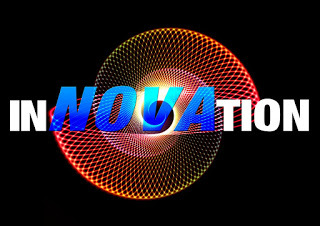 Innovation Gaps? There are many forms of innovation - technology, application, product, design, business model, process, communication, or customer experience, etc; there’re also many ‘flavors’ of innovations, systematic innovation, customer-centric innovation, open innovation, design-driven innovation, or management innovation., etc, but fundamentally, what are the innovation gaps, the gap differentiation helps delineate the problems and opportunities for innovation, and through identifying such gaps, business can manage innovation portfolio more effectively.?The “Future of CIO” Blog has reached 1.6+million page views with about #3300+ blog posting in 59+ different categories of leadership, management, strategy, digitalization, change/talent, etc. blog posting. The content richness is not for its own sake, but to convey the vision and share the wisdom, to inspire critical thinking and spur healthy debates. Blogging is not about writing, but about thinking and innovating the new ideas; it’s not just about WHAT to say, but about WHY to say, and HOW to say it. It reflects the color and shade of your thought patterns, and it indicates the peaks and curves of your thinking waves. Unlike pure entertainment, quality and professional content takes time for digesting, contemplation and engaging, and therefore, it takes the time to attract the "hungry minds" and the "deep souls." It’s the journey to amplify diverse voices and deepen digital footprints, and it's the way to harness your innovative spirit.Follow us at: @Pearl_Zhu
Innovation Gaps? There are many forms of innovation - technology, application, product, design, business model, process, communication, or customer experience, etc; there’re also many ‘flavors’ of innovations, systematic innovation, customer-centric innovation, open innovation, design-driven innovation, or management innovation., etc, but fundamentally, what are the innovation gaps, the gap differentiation helps delineate the problems and opportunities for innovation, and through identifying such gaps, business can manage innovation portfolio more effectively.?The “Future of CIO” Blog has reached 1.6+million page views with about #3300+ blog posting in 59+ different categories of leadership, management, strategy, digitalization, change/talent, etc. blog posting. The content richness is not for its own sake, but to convey the vision and share the wisdom, to inspire critical thinking and spur healthy debates. Blogging is not about writing, but about thinking and innovating the new ideas; it’s not just about WHAT to say, but about WHY to say, and HOW to say it. It reflects the color and shade of your thought patterns, and it indicates the peaks and curves of your thinking waves. Unlike pure entertainment, quality and professional content takes time for digesting, contemplation and engaging, and therefore, it takes the time to attract the "hungry minds" and the "deep souls." It’s the journey to amplify diverse voices and deepen digital footprints, and it's the way to harness your innovative spirit.Follow us at: @Pearl_Zhu
Published on November 20, 2016 22:17
Digital CIO’s Three Practices to Build Business Advantage
 Digital CIOs are one of the most sophisticated leadership roles in contemporary businesses today. As they are leading one of the most complex and dynamic functions of the business, and managing one of the most intelligent groups of talent in the organization. Especially nowadays forward-thinking organizations are empowering their CIOs to lead changes and drive digital transformation. What are digital CIO’s best or next practices to run a differentiated IT and build business advantage?
Digital CIOs are one of the most sophisticated leadership roles in contemporary businesses today. As they are leading one of the most complex and dynamic functions of the business, and managing one of the most intelligent groups of talent in the organization. Especially nowadays forward-thinking organizations are empowering their CIOs to lead changes and drive digital transformation. What are digital CIO’s best or next practices to run a differentiated IT and build business advantage?Information grid: In order to improve IT effectiveness and unleash its potential, IT leaders need to make an objective assessment of IT maturity. Create a comprehensive list of the IT organization’s strengths, weaknesses, goals, and objectives based on self-evaluation. They need to equip with the power of knowledge: (1) Understand IT strengths and weaknesses. (2) Understand IT teams strengths and weaknesses. (3) Comprehensive knowledge of the business and competitors. Map the information into an information grid. Your goals and objectives will be your drivers. Laser focus on what is good for the business, and what defines success. Because often technology is the disruptive force behind digital innovation, besides strengths and weaknesses analysis, it’s also important to analyze trends. Opportunities and threats cannot exist without a context of interactions, which constitutes an implicit system. Opportunities often double up on strengths and threats often double up on weaknesses. By adding the trends, you're asking the organization to look at what's happening now and what's coming down the pike so they can be proactive in preparing for it.
Identify gaps: The CIO needs to know how to play a bridge between what the business understands and what technology understands. He/she would then make sure the two worlds meet to ensure an optimal performing business. What C-level executives really want is a partner, someone who knows what they want before they know themselves, who innovates by understanding the business, as well as what they do; the partner that works both "on the business" and "in the business," not just "for the Business. IT leaders involve co-creating business strategy. This will allow IT to shine in both roles –as enabler and driver. This would then drive products and services for customers at the best possible cost and ensure as high as possible shareholder return on investment. IT is the only functional domain which is at the unique position to oversee business processes and build digital capabilities. Hence, it plays a significant role in identifying the gaps between strategy and implementation. IT proactively works as an integral part of the business to capitalize on opportunity via leading the transformation; IT is a key component in building differentiated business capabilities, and business catalyzer to reach high-level performance. The IT leader is positioned to understand the business across the enterprise. When he/she can accomplish that goal, that is when IT can drive value into the organization.
 Propose and manage new ideas: CIOs are expected to constantly propose new ideas and challenging the status quo. Digital IT is a paradigm shift in role, responsibility, and attitude. CIOs who are only putting stress on "have the knowledge" not on "build the knowledge" might be in danger just to preserve the organization and thus create huge constraints for the possible innovation. A confident CIO needs to keep asking, "why? why? why?", to manage a healthy innovation portfolio, with incremental innovation in optimizing business processes, as well as disruptive innovations with structure in renovating business model and upcoming business expansion. Many companies form and grow on the basis of "idea creation," but then get bogged down when trying to "commercialize" those ideas--which requires a different skill set, focus, and culture. IT can bring scientific discipline and disruptive digital technology to demystify innovation, it needs to break some outdated rules and takes a systematic approach with robust, but not overly rigid processes for innovation management.
Propose and manage new ideas: CIOs are expected to constantly propose new ideas and challenging the status quo. Digital IT is a paradigm shift in role, responsibility, and attitude. CIOs who are only putting stress on "have the knowledge" not on "build the knowledge" might be in danger just to preserve the organization and thus create huge constraints for the possible innovation. A confident CIO needs to keep asking, "why? why? why?", to manage a healthy innovation portfolio, with incremental innovation in optimizing business processes, as well as disruptive innovations with structure in renovating business model and upcoming business expansion. Many companies form and grow on the basis of "idea creation," but then get bogged down when trying to "commercialize" those ideas--which requires a different skill set, focus, and culture. IT can bring scientific discipline and disruptive digital technology to demystify innovation, it needs to break some outdated rules and takes a systematic approach with robust, but not overly rigid processes for innovation management.Digital CIOs as top business leaders today need to be Chief Information Officer, Chief Interaction Officer, Chief Innovation Officer, and Chief Improvement Officer, etc. When top leaders, regardless what type of mind you have, go beyond short-term gain, take calculated risks and make long-term investments, and develop a series of practices to build the business advantage, organizations have a better opportunity to shift from surviving to thriving mode.Follow us at: @Pearl_Zhu
Published on November 20, 2016 22:11
November 19, 2016
CIOs’ Digital Agenda: Five Big “When”s in IT Digital Transformation Nov. 2016
 Due to the changing nature of technology, IT leadership role also continues to involve & shift the focus, to move up the maturity level. More and more CIOs are requested to take more responsibility and many CIOs present the breadth and depth of leadership competency to have in-depth understanding the "5W+1H" digital navigation. Here are Five big “When” in IT digital transformation.
Due to the changing nature of technology, IT leadership role also continues to involve & shift the focus, to move up the maturity level. More and more CIOs are requested to take more responsibility and many CIOs present the breadth and depth of leadership competency to have in-depth understanding the "5W+1H" digital navigation. Here are Five big “When” in IT digital transformation.Five Big “When”s in IT Digital TransformationIT Transformation Debate: When Should IT Lead, When Should IT Follow? More often than not, technology is the catalyst for driving business change and digital transformation, however, in most of the companies, IT is still perceived as an order taker and support function, and most of IT organizations get stuck at the lower level of maturity for functional alignment or enabler. So IT is at a crossroad: Shall IT lead or follow? Should IT leadership rock the boat or just keep it afloat? And how to run digital IT with high speed and agility?
When should the CIO take The Initiative to Promote Strategic Business Transformation? Either fast-growing businesses or well-established organizations have to continuously adapt to the numerous changes and well chart the path to significant business transformations such as digitalization or globalization, should CIOs take the initiative to promote such strategic business initiatives, if so, shall they promote at the front or lead from behind? Are they more as idea initiator or governance champion? And what’s the best scenario to take such transformational leadership?
Change Management at the Cross Road: When to Make a Big Jump, When to Take Small Steps? Due to the “VUCA” new normal of the digital age, either at the individual or organizational level, “Changeability” becomes an important measure to assess a person or a business’s potential, agility, and maturity. Unfortunately, change is not as easy as it sounds, more than two-thirds of business change initiatives fail to reach the expectation. Change Management in many organizations seems to be at the crossroad- Should you take an audacious approach of accelerating digital transformation, or take small steps for making incremental changes? What are the bottlenecks for changes, and how to avoid pitfalls in making a big leap?
The CIO’s Tough Choice: Be Proactive or Reactive, and When? Organizations large or small on the journey to digital transformation, IT plays a critical role as an enabler to drive changes. From IT leadership perspective, why are some CIOs reactive, rather than proactive in trying new technologies? Are they just reluctant to changing a working system, or are they not empowered enough?
 When Shall you Go with Intuition, when shall you do Analytics? A business decision is both art and science, especially in the exponential change and business dynamic we face today, it is so difficult to make effective decisions without the right strategy and methodology. How do you decide whether you should go with your gut, or do a careful analysis? What questions do you ask? What role does problem framing have in the choice balance between intuition and analytics or gut and reason? What factors do you consider? Do you have a rule of thumb??
When Shall you Go with Intuition, when shall you do Analytics? A business decision is both art and science, especially in the exponential change and business dynamic we face today, it is so difficult to make effective decisions without the right strategy and methodology. How do you decide whether you should go with your gut, or do a careful analysis? What questions do you ask? What role does problem framing have in the choice balance between intuition and analytics or gut and reason? What factors do you consider? Do you have a rule of thumb??The “Future of CIO” Blog has reached 1.6 million page views with 3300+ blog posting in 59+ different categories of leadership, management, strategy, digitalization, change/talent, etc. blog posting. The content richness is not for its own sake, but to convey the vision and share the wisdom. Blogging is not about writing, but about thinking and innovating the new ideas; it’s not just about WHAT to say, but about WHY to say, and HOW to say it. It reflects the color and shade of your thought patterns, and it indicates the peaks and curves of your thinking waves. Unlike pure entertainment, quality and professional content takes time for digesting, contemplation and engaging, and therefore, it takes the time to attract the "hungry minds" and the "deep souls." It’s the journey to amplify diverse voices and deepen digital footprints, and it's the way to harness your innovative spirit.Follow us at: @Pearl_Zhu
Published on November 19, 2016 23:50
Five Focal Point to Digitize and Innovate Education
 Digital makes an impact on almost every industry and geography around the globe. It is not just about the fancy gadgets or trendy technologies only. It is the mindset to advocate changes and innovation; it is the management philosophy to break down silos and encourage holistic thinking and self-management. Nowadays, commodity knowledge is only a click away, and creativity becomes #1 wanted skill for the business and our society. The “products” of education - digital workforces today or tomorrow not only need to compete with each other in the global scope but also have to compete with machines, the mechanical education with manufacture style, focusing on instilling static knowledge, is no longer fit enough for the exponential changes and shorten knowledge life cycle, talented people today not only need to learn, de-learn and relearn, but also co-create the new knowledge all the time to adapt to changes and catalyze innovation. Thanks for the unprecedented digital convenience today, there are so many things to learn, and there are so many ways to learn, how to digitize education with hybrid styles to inspire learning, unlock creativity, and build nonlinear skills and capabilities to meet the emergent digital talent requirement?And what are focal points to digitize and innovate education?
Digital makes an impact on almost every industry and geography around the globe. It is not just about the fancy gadgets or trendy technologies only. It is the mindset to advocate changes and innovation; it is the management philosophy to break down silos and encourage holistic thinking and self-management. Nowadays, commodity knowledge is only a click away, and creativity becomes #1 wanted skill for the business and our society. The “products” of education - digital workforces today or tomorrow not only need to compete with each other in the global scope but also have to compete with machines, the mechanical education with manufacture style, focusing on instilling static knowledge, is no longer fit enough for the exponential changes and shorten knowledge life cycle, talented people today not only need to learn, de-learn and relearn, but also co-create the new knowledge all the time to adapt to changes and catalyze innovation. Thanks for the unprecedented digital convenience today, there are so many things to learn, and there are so many ways to learn, how to digitize education with hybrid styles to inspire learning, unlock creativity, and build nonlinear skills and capabilities to meet the emergent digital talent requirement?And what are focal points to digitize and innovate education?Metacognition: Or learning how to learn, is a vital element of independent learning in the digital era of rapid and relentless change. Traditional education is often one size fits all; digital education should be individually tailored and advocate self-directed learning. When we talk about meta-cognition, we're looking at process rather than outcomes. With this in mind, you’d want to observe learners in context while they are learning and try to gather evidence of their thought processes. By supporting learners to learn how to learn, critically examine their thinking and reflect thoroughly on what behaviors helped them learn, they will become better problem solvers, continuous lifelong learners and adapt more readily to whatever changes life/work throws at them. Metacognition can be assessed by observation and conversation. By asking questions and listening, you can understand how the individual is thinking; by continually asking how a person arrived at a particular statement, concept or idea, you can deduce how a person is understanding the things or the situations. A big part of metacognition and more importantly, why metacognition is important, is to give the learner an opportunity to be aware of and understand their own strengths and weaknesses so that they can learn or adapt their skills and strategies. Examining the learning process enables you to develop more effective learning and teaching approaches. If you know more about how people learn, you can work toward developing strategies that stimulate and support it as effectively as possible.
Developing multidimensional thinking skills: Traditional education focuses on instilling static knowledge, digital education needs to focus on developing thinking ability. The very quality of education is to assess how well it shapes the right sets of mind (growth, progression, creativity, open and learning, etc), and develop the multidimensional thinking skills such as Independent Thinking, critical thinking creative thinking, holistic thinking, strategic thinking, etc. “Quality" would be associated with an "Education" that fosters excellent problem-solving skills, ability to turn new ideas into innovative products, ability to apply specific knowledge as tangible applications in some field or another, ability to switch from meta-cognitive analysis to micro-analysis while understanding how the rules change when doing that, superb linguistic skills, fluency, and speed. The educators need to be creative enough to encourage and reward creative thinking and problem-solving. Education provides the broader window to see the world with knowledge lenses, but shouldn't become a constraint to limit one's imagination.
Time Management discipline: Traditional education focuses on setting a mandatory schedule, digital education needs to help receivers build time management skill. Time is the most perishable thing, it is not storable. Time does not wait for anyone, and it treats everyone equally. Time is the order of moments in which the mind perceives the changes. Hence, it is the construction of the mind. Good Time Management skill can boost confidence and build new capabilities, which can be gained through self-improvement. The effective time management boosts creativity as well, it makes you creative oriented, mature and generous enough. The wise time management can make life more meaningful, creative and productive.
Self-direct learning: Traditional education often has teacher driven agenda, digital education should evolve self-direct learning scenario, to encourage receivers thinking “who they are,” and explore “who they want to be.” Today’s digital-savvy generation will become more inquisitive than the previous generations, they have many inquiries: Why should we learn that static knowledge that I can search the internet only clicks away? What’s the connection between what I learn and what happens in the real word? How can I apply my learning to solve the problems which I am interested in? I want to be a unique human being, not just a commodity product with “score identity.” The emergence of social platforms and digital learning tools provide the new way to learn, share and collaborate, and the hybrid solution of formal and informal learning make self-directed learning a reality and imperative to unlock innate human ability, unleash unlimited human potential, and make learning not just mandatory, but fun and inspiring.
 Capability building, not just knowledge instilling: Traditional educations often train followers; digital education needs to develop authentic leadership. The good students via traditional lens are good followers who are compliant to teachers’ command and try their best to answer teachers’ questions. However, often they lack the courage to challenge the “status quo” of their teachers, and lack of independent thinking to question the questions or frame their own questions. The pitfall of education is to stifle originality and creativity, detach receivers from connecting with nature. Digital education should focus on unlocking creativity; it needs to engage, enlighten and develop human beings, who from there can learn the skills and build capabilities. Natural potential and intuition foster into known and undiscovered diverse approaches of thinking for maximizing self-determination, personal interpretation, and individual and group expression. To put simply, digital education needs to focus on building capabilities, not just teaching the static knowledge.
Capability building, not just knowledge instilling: Traditional educations often train followers; digital education needs to develop authentic leadership. The good students via traditional lens are good followers who are compliant to teachers’ command and try their best to answer teachers’ questions. However, often they lack the courage to challenge the “status quo” of their teachers, and lack of independent thinking to question the questions or frame their own questions. The pitfall of education is to stifle originality and creativity, detach receivers from connecting with nature. Digital education should focus on unlocking creativity; it needs to engage, enlighten and develop human beings, who from there can learn the skills and build capabilities. Natural potential and intuition foster into known and undiscovered diverse approaches of thinking for maximizing self-determination, personal interpretation, and individual and group expression. To put simply, digital education needs to focus on building capabilities, not just teaching the static knowledge. Education is the means to the end, it should never become a status quo. The education, we get may be, takes us out of the well, but for some, it also sets the limit for their continuous learning and growth due to the burden of credential; or add the filter to blur the visions or build silos. Education's objective should be to provide the foundation that results in the addition of new information and discoveries. Therefore, furthering the quality of civilization and enriching the role we play in the universe. To value and develop the child's natural potential and give a space to his/her creative, instinctive way of discovering the world,
Follow us at: @Pearl_Zhu
Published on November 19, 2016 23:46
How can IT improve Fluidity of the Digital Organization?
 If the organization in the industrial age is like a mechanical system composed of silo parts and managed via reductionistic philosophy, and then digital organizations today are more like living systems which keep growing or flowing. The membrane around every living cell is the delicate balance between solid and water. It’s solid enough to hold some sort of form and liquid enough to allow movement in and out of the cell, so the cell can interact with its environment. That is the future of the digital organization, solid enough to give some sort of form/meaning and open enough to its environment to allow movement of people, ideas, and information in and out. So what’s the role of IT in improving the business’s digital fluidity, and enable to run a high-performance steadfastly?
If the organization in the industrial age is like a mechanical system composed of silo parts and managed via reductionistic philosophy, and then digital organizations today are more like living systems which keep growing or flowing. The membrane around every living cell is the delicate balance between solid and water. It’s solid enough to hold some sort of form and liquid enough to allow movement in and out of the cell, so the cell can interact with its environment. That is the future of the digital organization, solid enough to give some sort of form/meaning and open enough to its environment to allow movement of people, ideas, and information in and out. So what’s the role of IT in improving the business’s digital fluidity, and enable to run a high-performance steadfastly? Keep information and knowledge flow in the digital ecosystem: The aim of modern Information Management has often been described as getting the right information to the right person, in the right format and medium, at the right time, in order to make right decisions. Information and knowledge do not stand still! It flows into the company, it flows out of it, it erodes; it gets created, and hopefully it flows to the customers of the company in terms of product and service delivery as well. As the accepted industrial model of knowledge management is too hierarchical, too centralized for the fast-moving, increasingly social or collaborative digital enterprise of today, there is a shift from more traditional knowledge management approaches to techniques that involve enhancing the "flow" of knowledge within a high mature digital organization to improve access and use. IT as the information steward of the business can achieve the qualitative and measurable value of information to catalyze business growth, also solve some of the pains underlying it, unlock the latent expertise, integrate information and knowledge management to build a culture of learning and innovation via following the principles such as connect-collect-collaborate; ask-learn-share, and improve organizational fluidity.
Idea and creativity flow: Digital is the age of innovation. The main barriers to innovation are silos, rigidity, inflexibility, static mindset, or bureaucracy, etc. It is important to build a scalable idea management which means for sharing and building ideas throughout the enterprise, even across silos and geographies. Idea flow can be streamlined via cross-functional communication, common business language for understanding, incentives to encourage sharing, focus - pay attention to ideas from others, and prioritization - select the ideas which can have a better opportunity to implement and maximize business value, skills - capability based idea management. Most good ideas emerge from interactions, not single individuals. Also, 3C (Communication, Collaboration, and Coordination) are necessities for good idea management. Therefore, idea flow is important for both idea creation and management. Good ideas nearly never emerge spontaneously. They need to seed and mature.
 Talent flow: Digital is the age of people, businesses need to keep the employees satisfied and engaged in order to unleash the collective human potential and build long term business competency. If the staff is the cog in the large mechanical wheel of organization which keeps spinning around in the industrial age, and then people are like living cells in the organic digital organization, keep growing and innovating. It is a strategic imperative for businesses to develop their employees and keep talent flow, to ensure the right people with the right capability in the right position to contribute the success of both individual and the organization as a whole. It also means to innovate and integrate talent management, performance management and culture management into a holistic people management solution for enforcing communication and understanding, building a strong business brand to attract top talents, improving employee experience, unleashing talent potential, aligning individuals’ career goal with the business goal, to ensure the staff keep sharpening their skill sets, step out of the comfort zone, and contribute to the business growth proactively.
Talent flow: Digital is the age of people, businesses need to keep the employees satisfied and engaged in order to unleash the collective human potential and build long term business competency. If the staff is the cog in the large mechanical wheel of organization which keeps spinning around in the industrial age, and then people are like living cells in the organic digital organization, keep growing and innovating. It is a strategic imperative for businesses to develop their employees and keep talent flow, to ensure the right people with the right capability in the right position to contribute the success of both individual and the organization as a whole. It also means to innovate and integrate talent management, performance management and culture management into a holistic people management solution for enforcing communication and understanding, building a strong business brand to attract top talents, improving employee experience, unleashing talent potential, aligning individuals’ career goal with the business goal, to ensure the staff keep sharpening their skill sets, step out of the comfort zone, and contribute to the business growth proactively. A digital business ecosystem is open, fluid, dynamic and energetic because the speed of change is exponentially increasing. Organizations today have to become highly responsive, and hyperconnected. Digital favors hybrid solutions, IT can weave all crucial business elements such as people, process, and technology into organizational competency for running a living digital organization.
Follow us at: @Pearl_Zhu
Published on November 19, 2016 23:38
November 18, 2016
CIOs’ Digital Agenda: Five Big “Which”s in IT Digital Transformation Nov. 2016
 Due to the changing nature of technology, IT leadership role also continues to involve & shift the focus, to move up the maturity level. More and more CIOs are requested to take more responsibility and many CIOs present the breadth of leadership competency. Here are Five big “Which” in IT digital transformation. Five Big “Which”s in IT Digital TransformationWhich Lessons Shall you Learn to Harness IT and Business Relationship ? Digital is about breaking down silo thinking and harness cross-functional communication and collaboration. Although, many say, the gaps between business and IT are actually enlarged because the different function of the business takes the pace with varying speed in digital transformation. The laggard would drag down the speed of change in the business as a whole. Hence, it’s important to build up a trust relationship between functions, between functional leaders, and between leaders and employees.? Windshield or Rear Mirror: Which is more Important to Leaders?Every leader is unique,and they may also have different leadership style: the pivotal leaders are the pathfinder to look forward, and discover the new trail to let others follow through; the seasoned leaders have plenty of experience, look back with rich and invaluable leadership lessons to learn from. Forward-looking or with an eye on the history and culture - both could be essential.What kind of leader do you prefer? Which leadership style do you have.
Due to the changing nature of technology, IT leadership role also continues to involve & shift the focus, to move up the maturity level. More and more CIOs are requested to take more responsibility and many CIOs present the breadth of leadership competency. Here are Five big “Which” in IT digital transformation. Five Big “Which”s in IT Digital TransformationWhich Lessons Shall you Learn to Harness IT and Business Relationship ? Digital is about breaking down silo thinking and harness cross-functional communication and collaboration. Although, many say, the gaps between business and IT are actually enlarged because the different function of the business takes the pace with varying speed in digital transformation. The laggard would drag down the speed of change in the business as a whole. Hence, it’s important to build up a trust relationship between functions, between functional leaders, and between leaders and employees.? Windshield or Rear Mirror: Which is more Important to Leaders?Every leader is unique,and they may also have different leadership style: the pivotal leaders are the pathfinder to look forward, and discover the new trail to let others follow through; the seasoned leaders have plenty of experience, look back with rich and invaluable leadership lessons to learn from. Forward-looking or with an eye on the history and culture - both could be essential.What kind of leader do you prefer? Which leadership style do you have.Which Color is CIO’s Parachute ? Based on the feedback from CIO forums, it seems that it is not only the CIO who is being asked to simultaneously be proficient as a strategic leader to a tactical manager, and even a technician being able to sing Kumbaya with every level in her/his company. It seems that other technical specialists may also be getting asked to perform similar functions. If this type of talent is really out there, it seems that the term associated with the above condition is described via the Purple Squirrel Syndrome?
Which is the best way to demonstrate Multidimensional IT value? IT is at the cross road, some high-performing IT organizations have built solid value proposition, and moved up its maturity to become the game changer and business catalyst for their companies. However, the majority of IT organizations get stuck in the lower-level of maturity and struggle to prove their unique value, for helping the business gain competitive advantage. So what are the best ways to demonstrate IT value, through analytics or metrics up front; through business cases or portfolios; through governance discipline; through agile practice or just through business-IT mutual understanding?
 Which IT Best Practices Do You Take at the Time of Uncertainty? IT is huge investment and costly in most of organizations, whether it is "planning" or "performance"; "process" or "people" issues - the CIOs shouldn't have been “overwhelmed” by complexity of IT and uncertainty of business dynamic, besides setting up practical IT Principles to follow, what are those IT practices can be shared?
Which IT Best Practices Do You Take at the Time of Uncertainty? IT is huge investment and costly in most of organizations, whether it is "planning" or "performance"; "process" or "people" issues - the CIOs shouldn't have been “overwhelmed” by complexity of IT and uncertainty of business dynamic, besides setting up practical IT Principles to follow, what are those IT practices can be shared?The “Future of CIO” Blog has reached 1.6 million page views with 3300+ blog posting in 59+ different categories of leadership, management, strategy, digitalization, change/talent, etc. blog posting. The content richness is not for its own sake, but to convey the vision and share the wisdom. Blogging is not about writing, but about thinking and innovating the new ideas; it’s not just about WHAT to say, but about WHY to say, and HOW to say it. It reflects the color and shade of your thought patterns, and it indicates the peaks and curves of your thinking waves. Unlike pure entertainment, quality and professional content takes time for digesting, contemplation and engaging, and therefore, it takes time to attract the "hungry minds" and the "deep souls." It’s the journey to amplify diverse voices and deepen digital footprints, and it's the way to harness your innovative spirit.Follow us at: @Pearl_Zhu
Published on November 18, 2016 22:52
Five Pillars of “Digital Master” Book Series
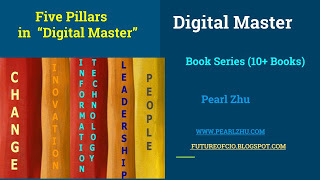 Organizations large or small are on the journey of digital transformation. Digitalization implies the full-scale changes in the way the business is conducted so that simply adopting a new digital technology may not be sufficient. You have to transform the company's underlying functions, processes, and cultures, and organization as a whole with adjusted digital speed. “Digital Master” is the series of guidebooks (10+ books) to perceive the multifaceted impact digital is making to the businesses and society, help forward-thinking organizations navigate through the journey in a systematic way, and avoid “rogue digital.”
Organizations large or small are on the journey of digital transformation. Digitalization implies the full-scale changes in the way the business is conducted so that simply adopting a new digital technology may not be sufficient. You have to transform the company's underlying functions, processes, and cultures, and organization as a whole with adjusted digital speed. “Digital Master” is the series of guidebooks (10+ books) to perceive the multifaceted impact digital is making to the businesses and society, help forward-thinking organizations navigate through the journey in a systematic way, and avoid “rogue digital.”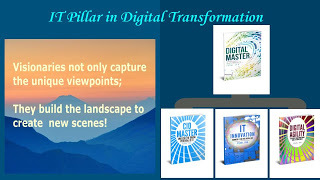 IT Pillar: More and more IT organizations are transforming from back end internal support function into front office revenue generators, and digital transformer. IT needs to be telling business about the opportunities and possibilities and that means IT needs to really understand the goals of the business and synchronize with business goals. IT should help their company achieve its business objectives in any way possible. Digital CIOs need to cover both the business dimension as well as the technology dimension with their team, and even go one step further, that the best CIO understands what current information abundance and technology innovations can add business value a and drive digital transformation. Reading “CIO Master,” and “Digital Master” book series to figure out.
IT Pillar: More and more IT organizations are transforming from back end internal support function into front office revenue generators, and digital transformer. IT needs to be telling business about the opportunities and possibilities and that means IT needs to really understand the goals of the business and synchronize with business goals. IT should help their company achieve its business objectives in any way possible. Digital CIOs need to cover both the business dimension as well as the technology dimension with their team, and even go one step further, that the best CIO understands what current information abundance and technology innovations can add business value a and drive digital transformation. Reading “CIO Master,” and “Digital Master” book series to figure out.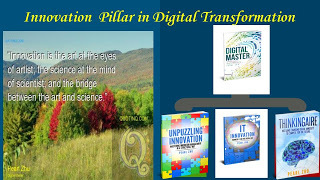 Innovation Pillar: In order to survive and thrive, innovation is “must have,” not “nice to have” approach in running a business today. But for most organizations, innovation is just a big puzzle with many tangled concerns. Can innovation be planned? What are some of the ideas that were applied to innovative initiatives that you have underway or experienced, either as the driver or participant, that helped facilitate or impeded their success? What are some viable approaches to being innovative while addressing the constant budget squeeze? Is innovation management a paradox? Do you have such an abundant innovation pipeline? Read “IT Innovation,” “Thinkingaire,” and “Digital Master” book series to understand further.
Innovation Pillar: In order to survive and thrive, innovation is “must have,” not “nice to have” approach in running a business today. But for most organizations, innovation is just a big puzzle with many tangled concerns. Can innovation be planned? What are some of the ideas that were applied to innovative initiatives that you have underway or experienced, either as the driver or participant, that helped facilitate or impeded their success? What are some viable approaches to being innovative while addressing the constant budget squeeze? Is innovation management a paradox? Do you have such an abundant innovation pipeline? Read “IT Innovation,” “Thinkingaire,” and “Digital Master” book series to understand further.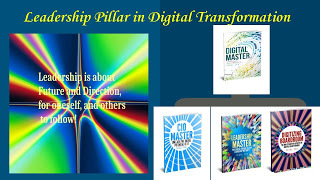 Leadership Pillar: As businesses and the world move deeper and deeper into the digital world of “VUCA” normality -volatility, uncertainty, complexity, and ambiguity, leaders of any organization, large or small, must capture the foresight of digitalization, gain the insight upon globalization, and become knowledgeable about the terrain of the hyper-connected land out there. The leaders need to observe, perceive, and pay attention to the myriad of internal, external, national or global forces that define and influence the way we do business these days. Read “Leadership Master, ” "Digitizing Boardroom," and “Digital Master” book series to dive deeper.
Leadership Pillar: As businesses and the world move deeper and deeper into the digital world of “VUCA” normality -volatility, uncertainty, complexity, and ambiguity, leaders of any organization, large or small, must capture the foresight of digitalization, gain the insight upon globalization, and become knowledgeable about the terrain of the hyper-connected land out there. The leaders need to observe, perceive, and pay attention to the myriad of internal, external, national or global forces that define and influence the way we do business these days. Read “Leadership Master, ” "Digitizing Boardroom," and “Digital Master” book series to dive deeper. 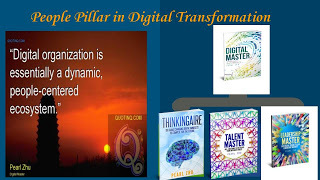 People Pillar: People are always the most invaluable human asset and capital investment in any business, especially digital is the age of people. The digital transformation means that companies need to infuse digital into every aspect of the business, shape the enterprise-wide digital capabilities and overall ecosystem which include people, process, and technology. Talent Management is the key business capability in digital transformation, it has to be built upon all the dimensions such as scope, alignment, design, execution, governance, metrics, etc, to enforce cross-functional collaboration, and to embed agility into the process of adapting to the changes. Reading "Talent Master" and "Digital Master" book series to brainstorm digital talent management.
People Pillar: People are always the most invaluable human asset and capital investment in any business, especially digital is the age of people. The digital transformation means that companies need to infuse digital into every aspect of the business, shape the enterprise-wide digital capabilities and overall ecosystem which include people, process, and technology. Talent Management is the key business capability in digital transformation, it has to be built upon all the dimensions such as scope, alignment, design, execution, governance, metrics, etc, to enforce cross-functional collaboration, and to embed agility into the process of adapting to the changes. Reading "Talent Master" and "Digital Master" book series to brainstorm digital talent management.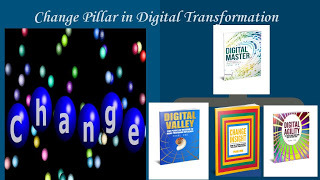 Change Pillar: Digital is all about changes, and change is multifaceted with increasing speed and velocity.However, the accelerating speed of change, the volatile and uncertain business environment make the change no longer just a one-time initiative, but as an ongoing capability. Reading "Change Insight" and "Digital Master" Book series to capture insight.
Change Pillar: Digital is all about changes, and change is multifaceted with increasing speed and velocity.However, the accelerating speed of change, the volatile and uncertain business environment make the change no longer just a one-time initiative, but as an ongoing capability. Reading "Change Insight" and "Digital Master" Book series to capture insight.Digital transformation represents the next stage of business maturity which will improve how the enterprise works and interact with its ecosystem, with the people at the center of its focus. Most companies naturally aim to move into a more advanced stage of digital deployment by tailoring their own unique strength and business maturity. They hope to outstrip competitors and eventually become the digital masters. “Digital Master” book series intend to throw some light to help the digital leaders and professionals to understand digital transformation in a holistic way, and become digital ready psychologically, intellectually, and methodologically. Follow us at: @Pearl_Zhu
Published on November 18, 2016 22:49
IT Fitness: Manage Right to Amplify Digital Effect
 IT is an enabler of current and future capability for both the organization and its ecosystem. Much of top management conversation about IT should be to framed in respect of the business activities, keep digital fit and improve overall organizational effectiveness, agility, and maturity. The CIOs have to pursue strategic alignment, operational integration, and innovative brainstorming with the business. Because the long-term organizational growth is usually based on IT enable business competency, maximizing collective human capacities such as productivity improvement, operational efficiency, and cost optimization. A digital fit IT can become an innovation engine and growth multiplier of the organization.
IT is an enabler of current and future capability for both the organization and its ecosystem. Much of top management conversation about IT should be to framed in respect of the business activities, keep digital fit and improve overall organizational effectiveness, agility, and maturity. The CIOs have to pursue strategic alignment, operational integration, and innovative brainstorming with the business. Because the long-term organizational growth is usually based on IT enable business competency, maximizing collective human capacities such as productivity improvement, operational efficiency, and cost optimization. A digital fit IT can become an innovation engine and growth multiplier of the organization. Customer Perspective: A digital fit IT is moving up from IT-business alignment to IT-business alignment. IT has two sets of customers: the internal users and the end customers of the company. Digital IT is customer-centric, though it doesn’t mean IT is only an order taker, do whatever customers’ request for. Digital fit IT can deliver tailored customer solutions, It is IT management's responsibility to offer alternatives if they cannot deliver what is requested. IT also plays an important role in digitizing touch points of customer’s experience. Well-managed IT directly influence a customer's perception of a business. IT enables business innovation to create a value proposition that would move your prospects to become your clients; more importantly, to improve customer retention. Deploy a range of technologies that focus on improving the customer's experience and perception of business services, and making the investment to deliver to them products / services which more closely meet their needs, you are doing so to a greater extent than your competitors. Thus, IT is crucial to help the business become customer-centric, highly responsive, and highly innovative.
IT investment perspective: Besides people, IT perhaps is one of the most expensive investments in organizations today. Besides people, IT is also one of the most invaluable assets of the business as well. Information Management helps to optimize various business management, directly or indirectly related to long-term revenue. To keep digital-fit, IT priorities (business Value) are clear and no longer look arbitrary. There is a comprehensive business justification for information technology investment and longevity of investment including IT expenditure vs. saving. In almost every business environment, IT is an enabler / a tool that needs to be used efficiently and treated as an asset like any other capital investment specified and used accordingly. Digital fit IT can make wise investments to unleash its potential and the entire business potential to maximize performance and accelerate digital transformation.
 Business optimization perspective: Digital fit IT is about achieving digital premium, which means a lot, such as business effectiveness, information fluidity, agility, innovation, intelligence and people-centricity. IT has to transform into solution provider, not just a back-office service provider. The benefit of digital fit IT is reducing the TCO (total cost of ownership) as it reduces a lot of redundancy in the business process which ultimately increases the customer satisfaction (internal and external). Digital fit IT continually trim cost, ensure quality, adapt to changes, and work on consolidation, integration, modernization, optimization manage life cycle seamlessly.
Business optimization perspective: Digital fit IT is about achieving digital premium, which means a lot, such as business effectiveness, information fluidity, agility, innovation, intelligence and people-centricity. IT has to transform into solution provider, not just a back-office service provider. The benefit of digital fit IT is reducing the TCO (total cost of ownership) as it reduces a lot of redundancy in the business process which ultimately increases the customer satisfaction (internal and external). Digital fit IT continually trim cost, ensure quality, adapt to changes, and work on consolidation, integration, modernization, optimization manage life cycle seamlessly. A high-performing IT will engage business for both questions and answers, businesses also should learn and support their IT, as trust is a two-way street. When IT speaks the business language, credibility increases. Ultimately, what the forward-looking CIO and digital fit IT, in general, must truly understand the business visions and goals. Digital CIOs are uniquely placed to influence change through the expansion of domains of automation and the use of lightweight and cost-effective technologies to provide a competitive advantage, open new channels to market, retain and grow the customer base. Organizations which operate this way have happy staff and delightful customers, superior business capabilities, strong balance sheet, and positive social influence upon the environment.
Follow us at: @Pearl_Zhu
Published on November 18, 2016 22:39



